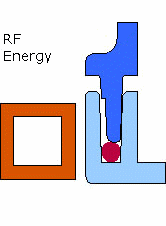Emabond Welding vs. Glue for Plastic Bonding: Which Is Better?
When it comes to bonding plastic materials, two of the most common methods are Emabond welding and using glue or adhesive. Each method has its own advantages and is suited for specific applications. In this article, we’ll compare these two bonding techniques to help you make the best choice for your project.
What Is Emabond Welding?

Emabond welding is a specialized process that uses electromagnetic energy to molecularly join plastic components together. The process involves placing a susceptor material between two plastic surfaces, which is then heated by an electromagnetic field. This causes the material to melt and weld the two pieces of plastic together. Emabond welding is commonly used in industries that require strong, durable bonds, such as automotive, medical, and industrial manufacturing.
Advantages of Emabond Welding:
- Superior Strength: Emabond welding creates a bond that is often stronger than the original plastic material. This makes it ideal for applications that require a high level of structural integrity.
- Fast Process: The welding process is quick, usually completed in seconds, which can speed up production times.
- No Chemical Residue: Unlike adhesives, which may leave a residue, Emabond welding doesn’t involve any chemical solvents or pretreatment.
- Durability: Emabond welds are resistant to environmental factors such as temperature fluctuations, moisture, and chemicals, ensuring long-lasting performance.
Disadvantages of Emabond Welding:
- Specialized Equipment: The Emabond welding process requires specific equipment, which can be expensive and may not be accessible to smaller operations.
- Piece Price: Emabond welding uses a susceptor material, made in house. This added cost is more expensive than most industrial adhesives.
What Is Glue or Adhesive Bonding?

Adhesive bonding is the process of using a glue, cement, or adhesive to bond two plastic surfaces. There are many types of adhesives available, from epoxies to cyanoacrylates (super glues), each offering different levels of bonding strength and flexibility. Adhesives are widely used in both commercial and DIY plastic bonding applications.
Advantages of Adhesive Bonding:
- Accessibility: Adhesives are readily available, easy to use, and don’t require specialized equipment, making them a popular choice for smaller projects or DIY applications.
- Versatility: There are adhesives for almost every type of plastic, and different formulas can be chosen based on specific bonding requirements, such as flexibility, strength, or resistance to environmental factors.
- Cost-Effective: Glues are typically cheaper than Emabond welding equipment and materials, which can be important for smaller projects or businesses with budget constraints.
Disadvantages of Adhesive Bonding:
- Weaker Bonds: Compared to Emabond welding, adhesive bonds are generally weaker and may degrade over time, especially in harsh environmental conditions.
- Curing Time: Many adhesives require time to cure before reaching full strength, which can slow down production processes.
- Chemical Sensitivity: Some adhesives are sensitive to chemicals, heat, and moisture, which can reduce the bond’s durability in certain environments.
Which Method Should You Choose?
The decision between Emabond welding and adhesive bonding largely depends on the requirements of your project.
- For Industrial Applications: If you need strong, durable, and long-lasting bonds, Emabond welding is likely the better choice, especially in industries where performance under stress is critical.
- For DIY or Small-Scale Projects: If you’re working on a DIY project or need a quick, easy solution, using glue or adhesive is more accessible and cost-effective, especially when cost of failure is low.
- When Precision is Key: For delicate or small components, adhesives provide better control, as they can be applied more precisely without the need for expensive machinery.
- Environmental Considerations: If your project will be exposed to harsh conditions like moisture, chemicals, or fluctuating temperatures, Emabond welding offers superior durability. However, specific adhesives designed for such environments could also be a viable option if welding isn’t practical.
Conclusion: Emabond Welding vs. Glue
Both Emabond welding and adhesive bonding have their place in plastic joining applications. Emabond is a go-to solution for industrial use due to its strength, speed, and durability. On the other hand, adhesives provide an easy, flexible, and low-cost solution for cheap, low strength, and low cost of failure projects.
Ultimately, the best method depends on your specific needs, including the strength of the bond, cost considerations, and the environment in which the bonded material will be used.
Optimize Your Plastic Bonding with the Right Method
Selecting the right bonding technique for your project can significantly impact the final product. Whether you opt for the industrial strength of Emabond welding or the versatility of adhesives, understanding the pros and cons will help you make the best decision. Need expert advice on choosing the right plastic bonding method? Contact us today!

